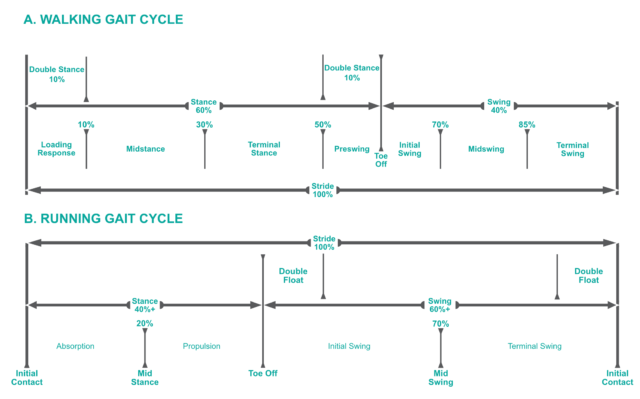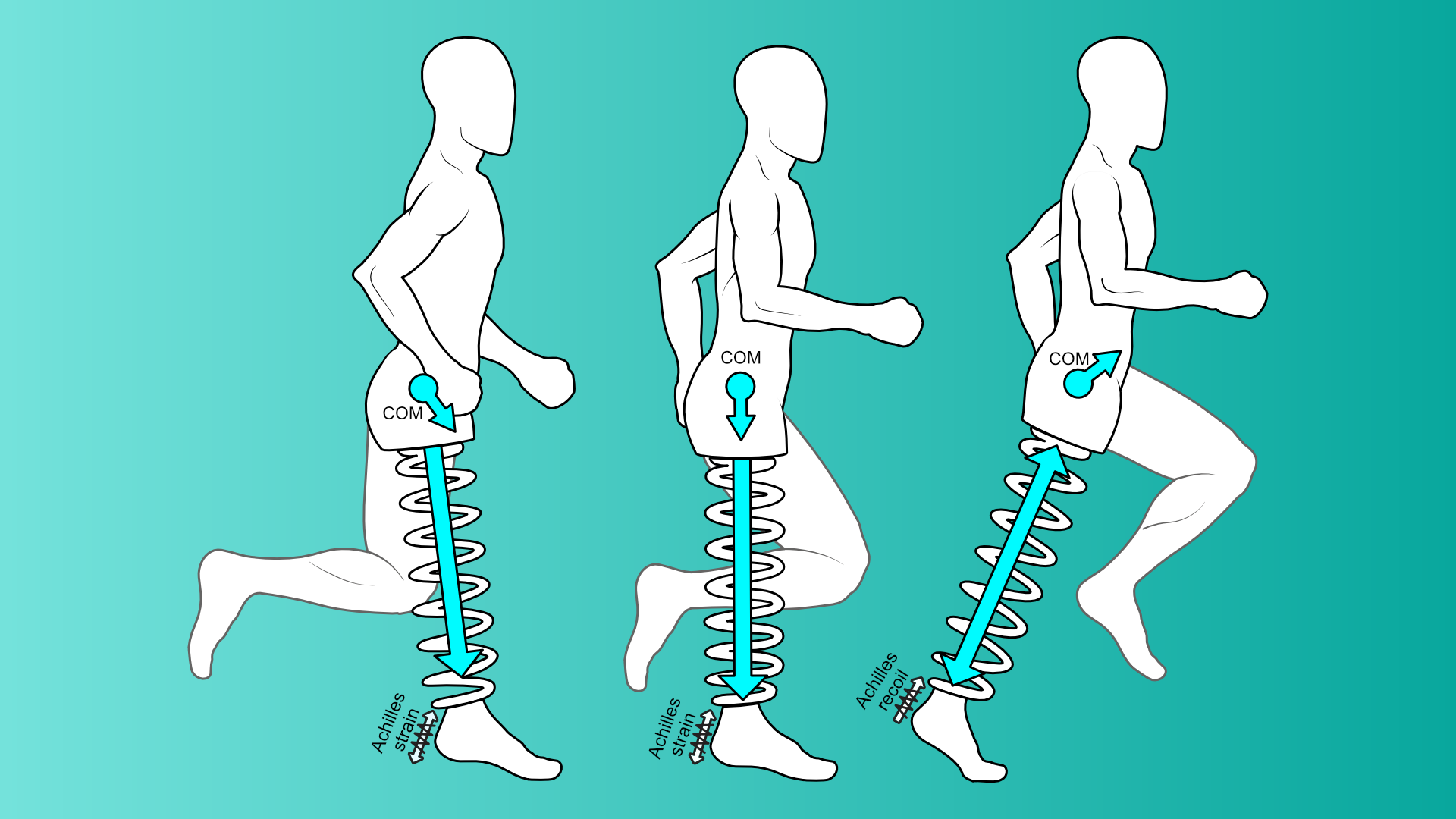Braking And Acceleration In Running Biomechanics
 Running is different from walking because of the absence of a double limb stance period in gait when the two legs are on the ground at the same time and a period in running known as the float phase when neither leg it on the ground.
Running is different from walking because of the absence of a double limb stance period in gait when the two legs are on the ground at the same time and a period in running known as the float phase when neither leg it on the ground.
It is actually having a float phase that gets a race-walker disqualified for running! Running also involves greater accelerations (speeds) than occur during walking, which requires bigger braking events when the foot hits the ground. Both braking and acceleration involve changes in energy use.

Braking and acceleration use of energy
Force is mass x acceleration, so the forces experienced in running are far greater than those that occur in walking. The forces relate to the energy being created in and by the body during running (which is also true in walking). Runners are either dissipating, storing, releasing or generating energy depending on what part of the running cycle the runner’s limb is in at any particular time. The dissipation of energy can occur through using special cushioning anatomy such as the heel fat pad, or through the action of muscle through a process called muscle-tendon buffering which allows joints and muscles to work together like shock absorbers.
Running involves much more energy than walking. The energetics or efficiency of human running is not good compared to the energetics of walking, being 50-80% greater in energy costs (1). This is because more braking energy is lost to the body and more acceleration energy needs to be created by muscles during running than occurs in walking (2,3).
Running is based on a spring-mass system where we bounce onto and off of the ground, using spring-like behaviour of muscle-tendon control of joint motion to act as a shock absorber with the spring-like recoil from the energy stored in the muscle-tendon tissues to helping to drive us upwards and forwards towards float phase and the next step.

The human lower limb and foot works as an energy dissipator during the braking phase, taking some energy away from what can be stored in the spring mechanism during impact (4). The elastic recoil of the spring, therefore, needs extra muscle activity to make up the difference from that energy lost in braking, topping up the energy for the acceleration phase.
The faster we run the worse the deficit between energy lost from braking to energy needed for acceleration becomes (4). Therefore there is a burst of negative work during the collision (braking) event followed by a rebound of positive work from energy storage (5), supplemented by muscle activity to make up for the energy deficit (6).
Ground contact BRAKING ENERGY = ENERGY STORED in muscles and tendons – DISSIPATED ENERGY during braking
Acceleration energy = STORED ENERGY + MUSCLE GENERATED ENERGY
The result of this running energy-deficient risks fatigue developing in the muscles far sooner and at a shorter distance than occurs in walking. Fatigue in running is a significant injury risk (7), so efficient running to prevent premature fatigue is important not only for performance but also to help prevent injury. Keeping the right muscles strong for your running style is, therefore, the key to reducing injury risk!
References:
- Farley CT, McMahon TA. (1992). Energetics of walking and running: insights from simulated reduced-gravity experiments. J Appl. Physio.. 73: 2709-12
- Kram R, Taylor CR. (1990). Energetics of running: a new perspective. Nature. 336: 265-7.
- Griffin AH, Roberts TJ, Kram R. (2003). Metabolic costs of generating muscular force in human walking: insights from load carrying and speed experiments. J Appl. Physio. 95: 172-83.
- Kelly LA, Cresswell AG, Farris DJ. (2018). The energetic behaviour of the human foot across a range of running speeds. Scien. Rep. 8: 10576.
- McMahon TA, Cheng GC. (1990). The mechanics of running: how does stiffness couple with speed. J Biomech. 23 (s1): 65-78
- Riddick RC, Kuo AD. (2016). Soft tissue store and return of mechanical energy in human running. J Biomech. 49: 436-41.
- Morin J-B, Samozino P, Millet GY. (2011). Changes in running kinematics, kinetics, and soring-mass behaviour over a 24-h run. Medi. Sci Sports Exerc. 43: 829-36.
